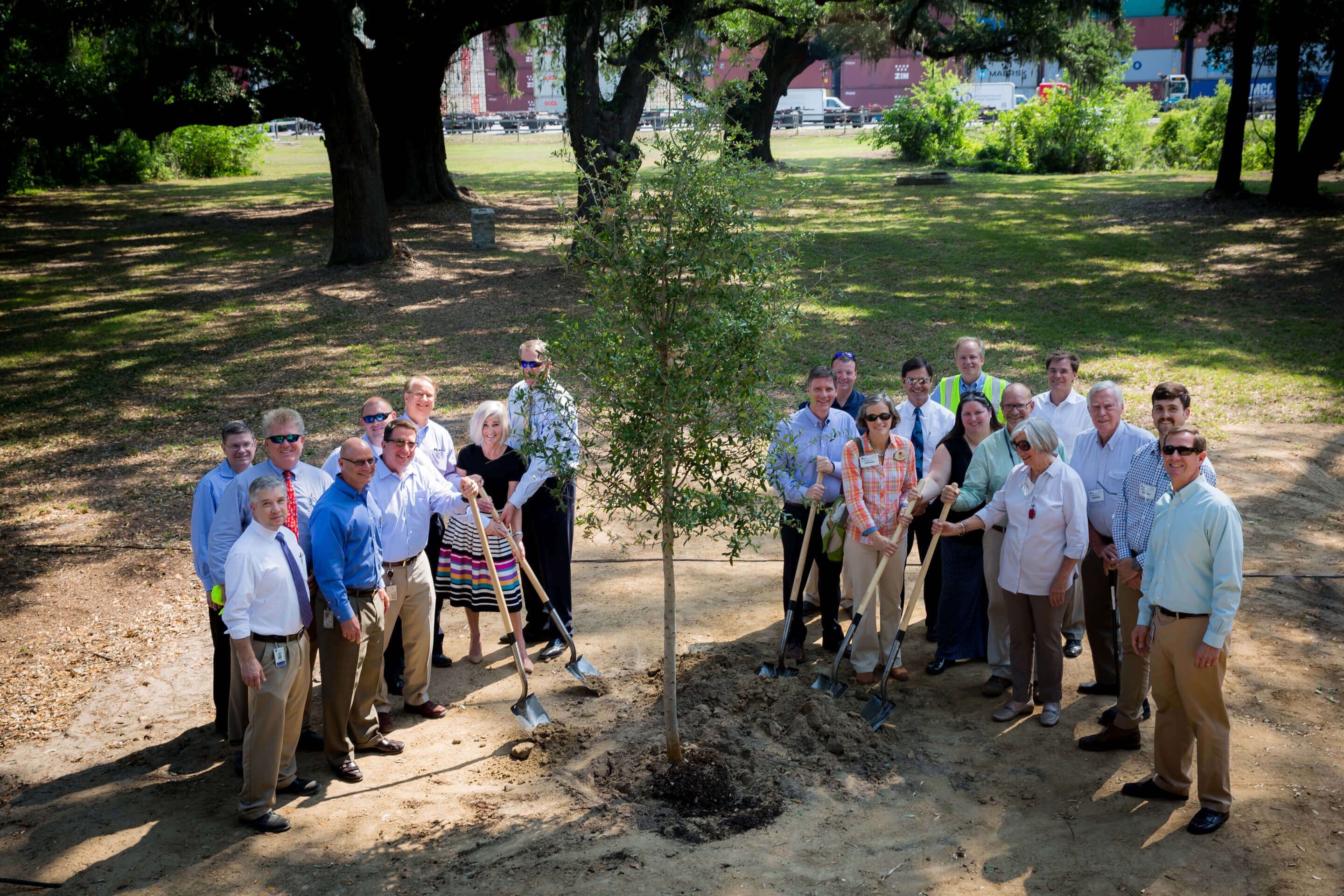In honor of National Arbor Day, community members joined Georgia Ports Authority officials to plant a young live oak at the Port of Savannah’s Garden City Terminal. The sapling replaces a historic oak lost last year during Hurricane Matthew. (Georgia Ports Authority)
Savannah, Ga. – April 28, 2017 – In honor of national Arbor Day, the Georgia Ports Authority held a special tree-planting ceremony at Garden City Terminal to replace a historic oak lost during Hurricane Matthew last year.
“As we improve our operations and upgrade facilities, we take every step we can to preserve Georgia’s historic, majestic trees,” said GPA Executive Director Griff Lynch. “The 10-year-old live oak sapling we’re planting today is a small example of how the GPA provides for our natural resources today and into the future.”
On the 1,200-acre Garden City Terminal, the GPA protects and preserves habitats from wetlands to old growth oak trees, as part of its commitment to conduct port operations in an environmentally responsible manner.
The sapling planted Friday joins a grove of about a dozen trees that are more than 200 years old adjacent to Highway 25. The oldest oaks at the port facility date to the mid-1600s.
Local arborist Shannon Baughman applauded the GPA’s sustainability effort protecting trees.
“Maintaining these old-growth trees at a working port shows that it is possible for industry and the natural environment to coexist,” Baughman said. “The shade these trees provide, the oxygen they produce and the carbon sequestered in their massive trunks provide long-term benefits to the area. It’s exciting that the Georgia Ports Authority recognizes their value.”
The GPA has a long track record of sustainable practices.
The Authority currently preserves 300 acres of natural wetlands in Brunswick, and has established 14 acres of wetlands at the Port of Savannah for its natural filtering capability, in order to protect the Savannah River. Additionally, GPA is a longtime supporter of the Caretta Research Project, which protects sea turtle hatchlings.
The GPA has transitioned its ship-to-shore cranes from diesel to electric power to reduce its carbon footprint, and in 2016, received the EPA Clean Air Excellence Award for its electric rubber-tired gantry crane program.
The eRTG program will transfer GPA’s rubber-tired gantry crane fleet – used to handle containers on terminal – to electric power. This will virtually eliminate diesel fuel usage for these machines and reduce the terminal’s diesel emissions.
High-tech lighting controls and container yard light fixtures reduce light pollution and cut energy consumption by 60 percent.
“Operating Georgia’s deepwater ports sustainably is an integral part of our mission,” said Lynch. “In every business decision, the Authority balances continued economic growth with being good stewards of precious natural resources.”
Find print-quality images of port operations here. Georgia’s deepwater ports and inland barge terminals support more than 369,000 jobs throughout the state annually and contribute $20.4 billion in income, $84.1 billion in revenue and $2.3 billion in state and local taxes to Georgia’s economy. The Port of Savannah handled 8.2 percent of the U.S. containerized cargo volume and 10.3 percent of all U.S. containerized exports in CY2015.
For more information, visit gaports.com, or contact GPA Chief Communications Officer Robert Morris at (912) 964-3855.

